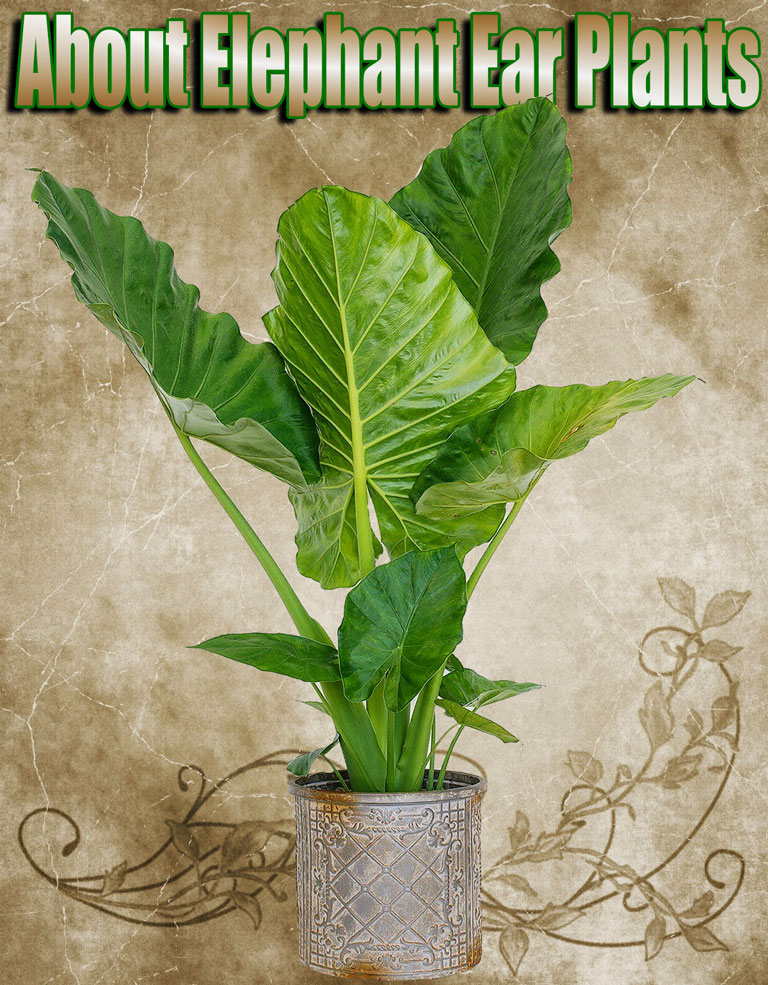
Plant taxonomy classifies the most widely known elephant ears, or “taro,” as Colocasia esculenta. Various cultivars also exist, including types with black leaves (Colocasia esculenta ‘Black Magic’). Elephant ears are herbaceous perennials in warm climates.
Planting Zones for Elephant Ear Plants:
In planting zone 8 and above, elephant ears can be left outside year-round. Elephant ears aren’t indigenous to Florida but have become naturalized in some wetland areas in the southern half of the state and are widespread. In fact, they are considered invasive there. In cold climates, the plants are treated as annuals, allowing us our own little piece of “tropical landscaping” — albeit short-lived.
Characteristics:
In landscaping, elephant ears are grown for their large, heart-shaped leaves. While these leaves can reach 3′ long and 2′ wide in the tropics, in the North they will remain smaller — but still impressive.
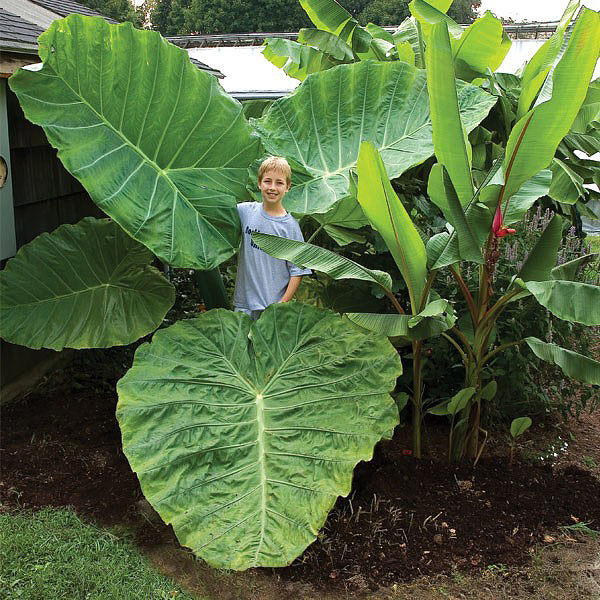
The plants can grow 8′ tall in the tropics; in the North, a height of 2′-3′ is more common (depending on growing conditions).
Sun and Soil Requirements for Elephant Ear Plants:
Grow elephant ears in a slightly acidic soil in partial shade. As a wetland plant in the wild, elephant ear plants crave water. This makes them a good choice for wet areas where homeowners usually have trouble finding suitable plants.
Uses for Elephant Ear Plants:
In the North, treat elephant ears as annuals. Take advantage of their large, attractive foliage and grow them amongst your other plants, thus varying the texture in a planting bed. Their thirst for water makes elephant ears effective not only in soggy areas of the landscape, but also near water features.
Plant Care for Elephant Ears:
Elephant ears are heavy feeders; fertilize them with a fertilizer high in nitrogen. These foliage plants are tropical but can be overwintered in cold climates. Just dig up the corms and keep them in a cool, but not freezing basement or garage, as you would store canna bulbs, dahlia tubers, etc. During this period of dormancy, make sure the corms neither rot nor totally dry out. Replant in spring when danger of frost has passed.
Colorful Cultivars of Elephant Ear Plants:
Besides the ‘Black Magic’ cultivar mentioned above, other cultivars of elephant ears have made a name for themselves for the striking colors of their foliage. Colocasia esculenta ‘Jet Black Wonder,’ for instance, has a white veining pattern that stands out sharply against its black background. Meanwhile, Colocasia esculenta ‘Yellow Splash’ has a variegated leaf, making it look rather like the pothos plant so widely used as a houseplant.
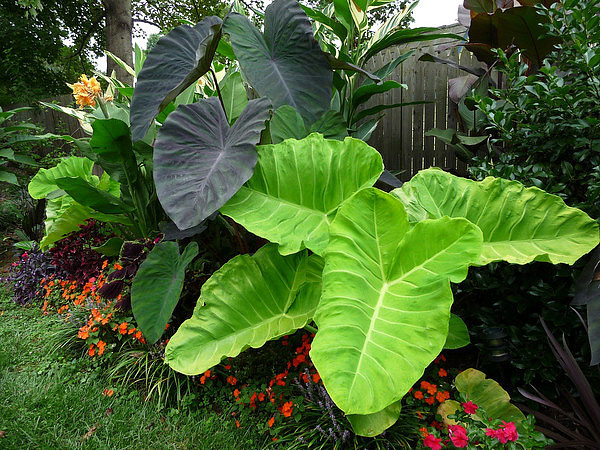
Name Origin of Colocasia Esculenta:
Elephant ears’ specific epithet, esculentia, is the same term that gives us “esculent,” meaning edible. Indeed, elephant ears are an important food source around the world, in warm climates (for more, see below).
Elephant Ears and Edible Landscaping — Taro Root:
For those of us interested in the ornamental value of Colocasia esculenta, the common name, “elephant ears” is apt, since we are impressed with the size of its leaves. But those with a culinary bent think of the plant as “taro” or “coco yam,” in which case the focus is usually on its root, or corm.
According to Wilfred Lee (“Ethnobotanical Leaflets,” Southern Illinois University, Carbondale, 1999), “Taro constituted the staff of life for the Hawaiians when Captain Cook arrived in the islands in 1778. At that time an estimated three hundred thousand people in the islands lived chiefly on poi (a fermented or unfermented taro paste), sweet potato, fish, seaweed, and a few green vegetables and fruits.”
Nonetheless, all parts of elephant ear plants can upset the stomach if ingested without being properly cooked first. The sap, moreover, can be a skin-irritant.
You’re Next Step
Landscaping pros know it, and the public is starting to catch on: pretty leaves have a dependability that flowers generally lack. Colocasia is just one example of a plant valued for the display put on by its leaves

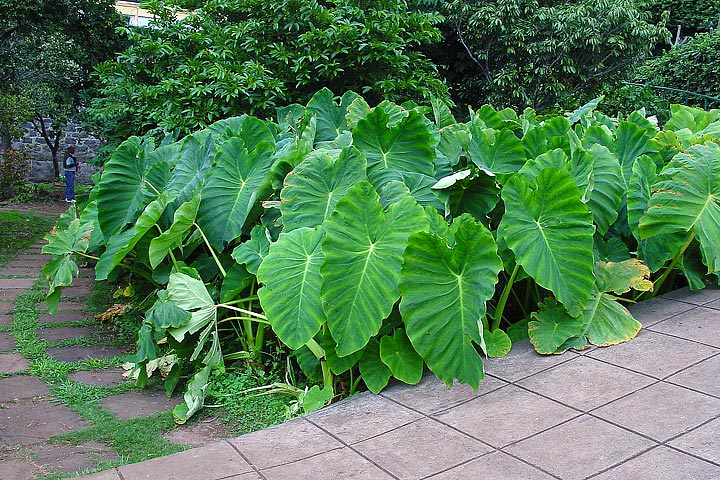
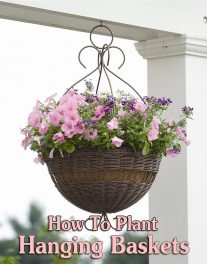
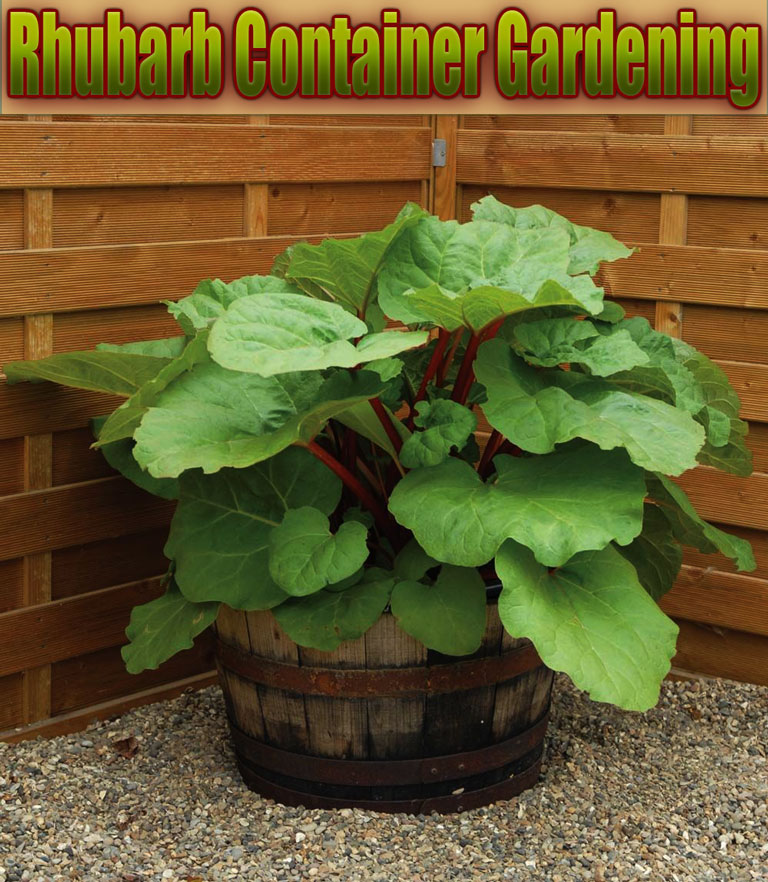
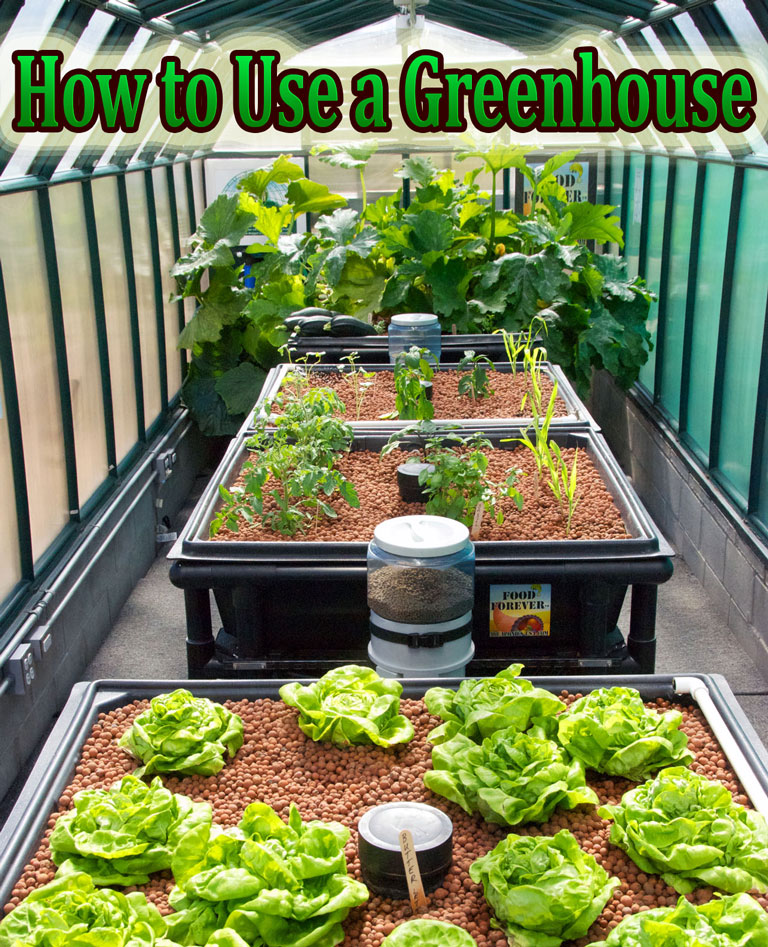
Good to know…
Texasinvasives.org has this plant listed as invasive. I think Florida does as well.
I’m surprised that so many plants that our local garden centers sell are invasives. Sure wish that information was disclosed on these plants. In my efforts to do some environmental good by planting a tree or bush or … I later learn it wasn’t so good. Maybe even harmful to our environment.
Anyone interested in starting a movement to request full disclosure on garden plants being sold at retail outlets?